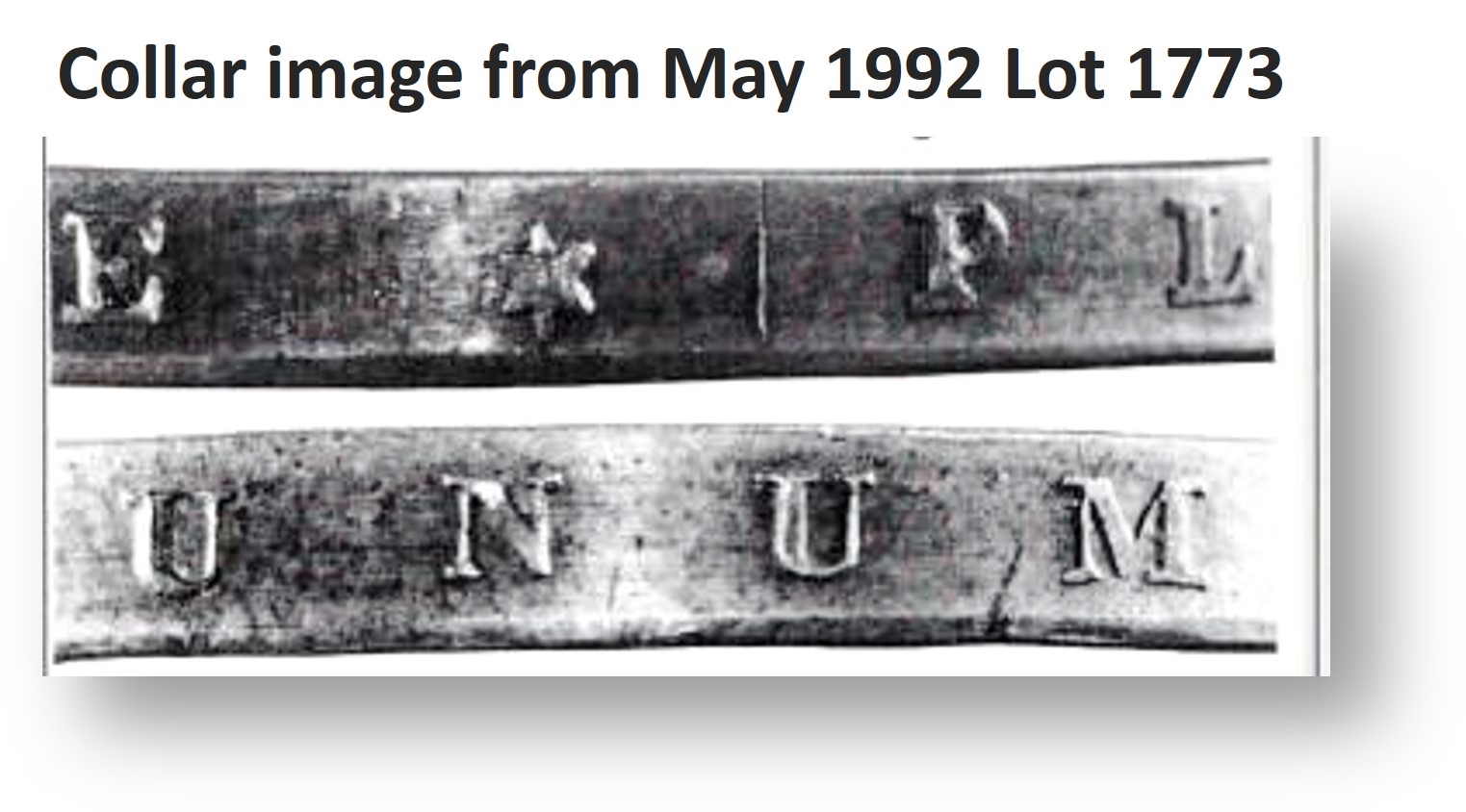Owner Comments:
 1885 $1 Snowden Dollar,
1885 $1 Snowden Dollar,
Judd-1747, Pollock-1959
Low R.6, PR63
Ex: Simpson.
Struck in silver with lettered edge.
Description:
The dies are the regular-issue 1885 Morgan dollar dies, but there is experimental edge lettering as follows:
* * * * * * E * / PLURIBUS * / UNUM * * * * *.
The so-called "Snowden dollars" were struck in silver, copper, and aluminum.
From 1992 LOT #1773 -- 412.6 grains. Diameter: 1.506 inches. Die alignment: 180°.
Comment:
To thwart counterfeiting, Philadelphia Mint Supt. Col. A. Loudon Snowden initiated experimentation using the tripartite collar to impart a raised edge design featuring E PLURIBUS UNUM and stars. The collar containing the edge lettering was comprised of three equal segments, each with an arc of 120°, equal to one-third the circumference. This which turned out to be difficult for Mint employees to coordinate with striking of the dies. Success was reached on June 12, 1885, with production reaching 80 to 100 coins per minute. Snowden transmitted the results by letter to Mint Director Horatio Burchard. Snowden’s edge collar experimentation was never put into practice during the 19th century. Burchard departed the Mint in mid-1885 and Snowden left the Mint’s employ the same year.
Heritage told the story of the Snowden dollar in their 2015 Central States auction:
“Snowden dollars were struck as an anti-counterfeiting measure. The edge was struck from a novel three-part collar that produced raised edge lettering on the coin. Considerable experimentation went into the production of these pieces, and on June 12, 1885 Snowden and his staff succeeded in getting the mechanism to work at normal production speeds of 80 to 100 coins per minute. Snowden retired at the end of the year, and left placement of the raised lettering to his successor. Director Burchard left office around the same time, and no one remained in the Mint who had Snowden’s insight, ability, or willingness to experiment to carry his project forward to completion. The tripartite collar was not used again until 1907 when Augustus Saint-Gaudens’ double eagles went into production.”
It seems curious that what was learned from the striking of the Snowden dollars had to be relearned in 1907 when the tripartite collar was used again, this time on the 1907 High Relief twenties. The NGC encasement does allows the edge lettering to be seen.
The coin itself is brightly mirrored and each side is covered with deep rose and gray patina. Close examination reveals a few light hairlines.
Provenance:
From Heritage 6/2021 US Coins Signature Auction / Lot #3770; Prior
Ex: Bob Simpson Collection / ANA Signature (Heritage, 8/2010) /lot #5731; and Prior
The Rarities Sale (Bowers & Merena 7/31/2002) /Lot #395 ($4300) (then in older non-edge view PCGS slab);
Bowers and Merena May 1992 Somerset Collection sale / Lot # 1773 (PF61)
Kagin's 328th Sale Oct 1982 / Lot #713 as PF63 ($5500);
Kagin's Jan 1975 Beverly Hilton /Lot #955